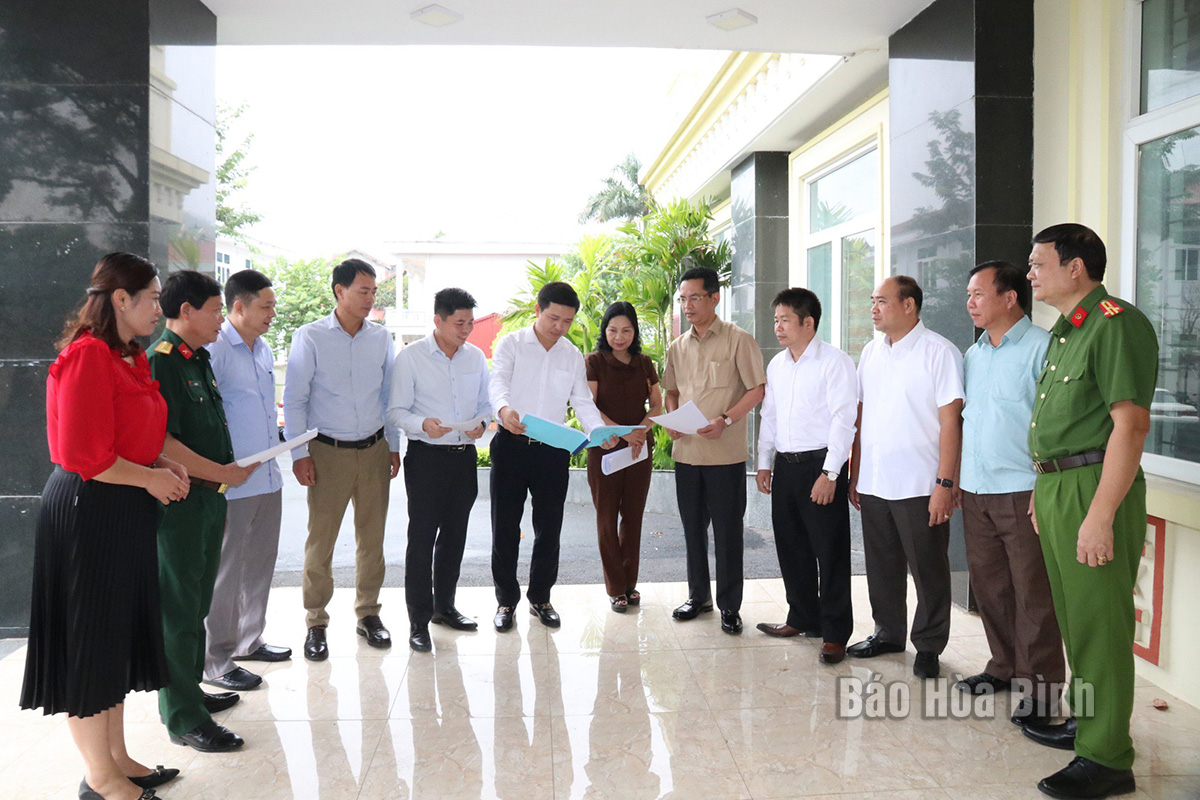



Leaders of the Party Committee and People's Committee of Luong Son discuss measures to mobilise resources for developing Luong Son into a town by 2025.
In an interview granted to Hoa Binh Newspaper, Nguyen Van Danh, Deputy Secretary of the Party Committee, and Chairman of the People's Committee of Luong Son district underlined the gateway role of the district for the province, saying that Luong Son is a key economic region of the province with strengths in developing industry, trade, services and resort tourism.
The district has three industrial parks (IPs), namely Luong Son, Nhuan Trach and South Luong Son, and two industrial clusters.
Covering an area of 83.08 ha, Luong Son IP is 100% occupied by 39 enterprises, creating jobs for over 15,000 workers. Meanwhile, infrastructure construction is underway in Nhuan Trach IP, which covers an area of 213ha.
Additionally, the locality is calling for investment in developing infrastructure facilities in South Luong Son with an area of over 203 ha.
Luong Son is home to 16 national and provincial historical and cultural relics, and beautiful landscapes. The locality’s tourism and service has strongly developed in recent times with many housing projects and resort complex projects being implemented, completed, and put into operation, such as La Saveur de Hoa Binh Resort, Ivory Villas and Resort, and Cuu Long ecological and service urban area.
These are the potential and advantages for Luong Son to develop sustainably, becoming one of the province's economic drivers with strengths in industry, urban areas, and services, Danh said.
According to the official, the district's total production value expanded by an estimated 16%, while GRDP per capita reached 83 million VND. Its export turnover reached 650 million USD, accounting for 45.23% of the total export value of the province.
The locality has achieved important results in newly-style rural development. Luong Son was recognised as a new rural district in 2019.
The district so far lured 219 investment projects, including 23 foreign-invested ones worth 304 million USD. Many projects have contributed to giving a facelift to urban and rural areas in the locality.
Regarding the planning work in the locality, Danh said that the local authority has planned to develop Luong Son into a town-level administrative unit and a general urban area that plays its role as a hub for traffic connection, and culture, economic and service exchange; and plays a driving force in promoting socio-economic development of the province.
So far, the urbanisation rate in the district reached 48.6%, higher than the rate of the province.
Danh said the local authority has mobilised resources for urban development, building technical infrastructure on the principle of creating a driving force for socio-economic development and promoting the economic restructuring of Luong Son district towards industrialization and modernization, green urban and urban areas for eco-resort tourism, and sports and entertainment in accordance with the province’s planning.
Danh expressed the belief that with solutions that have been implemented, Luong Son will realise its goal of becoming a town by 2025.